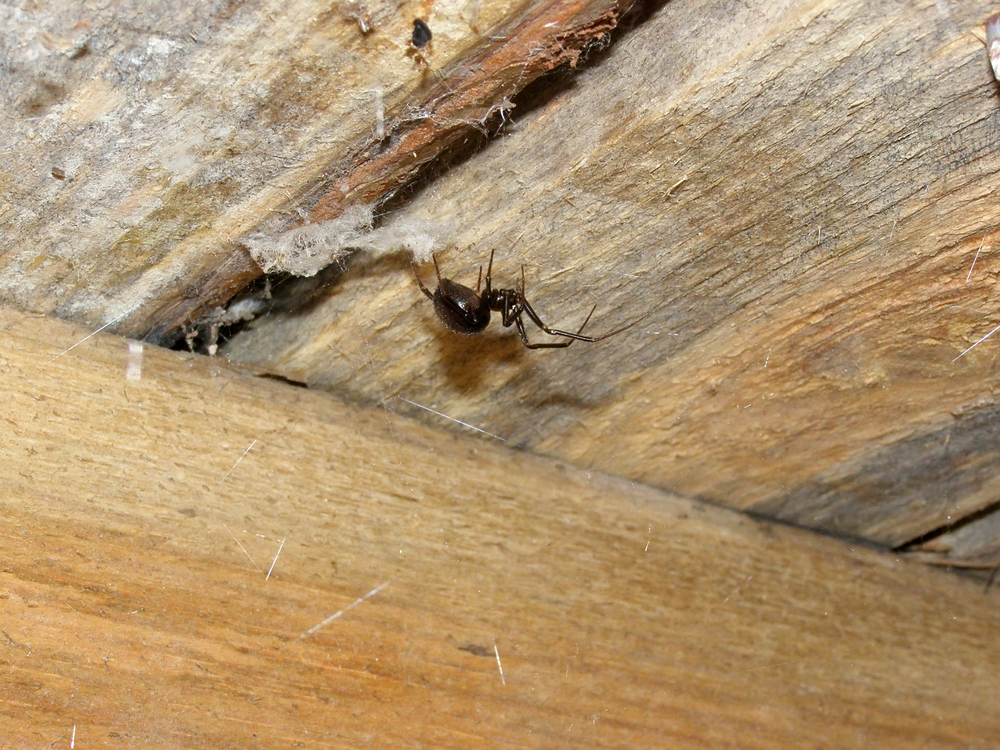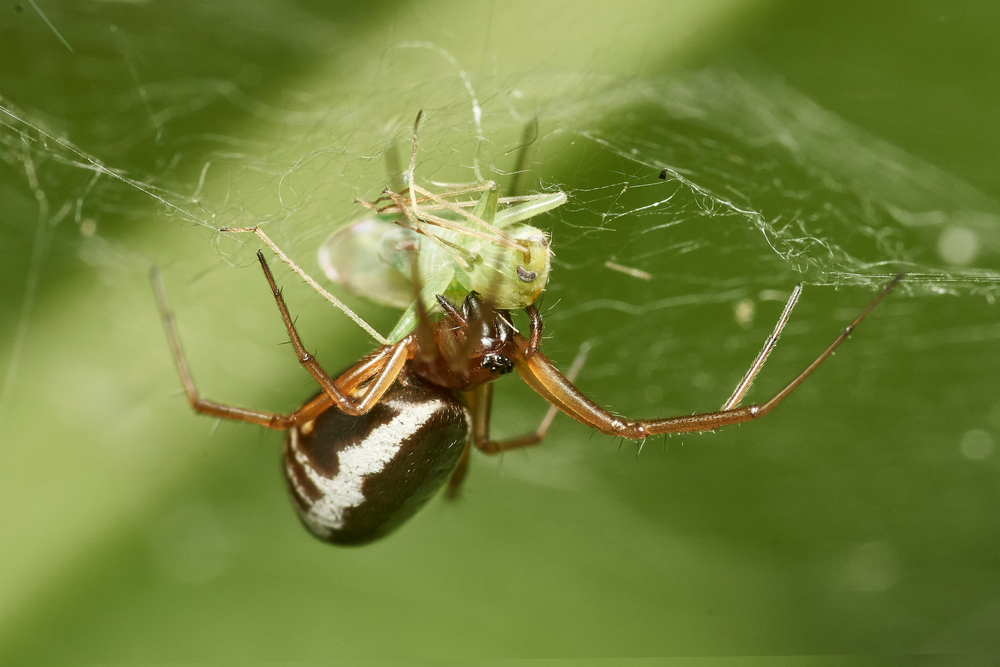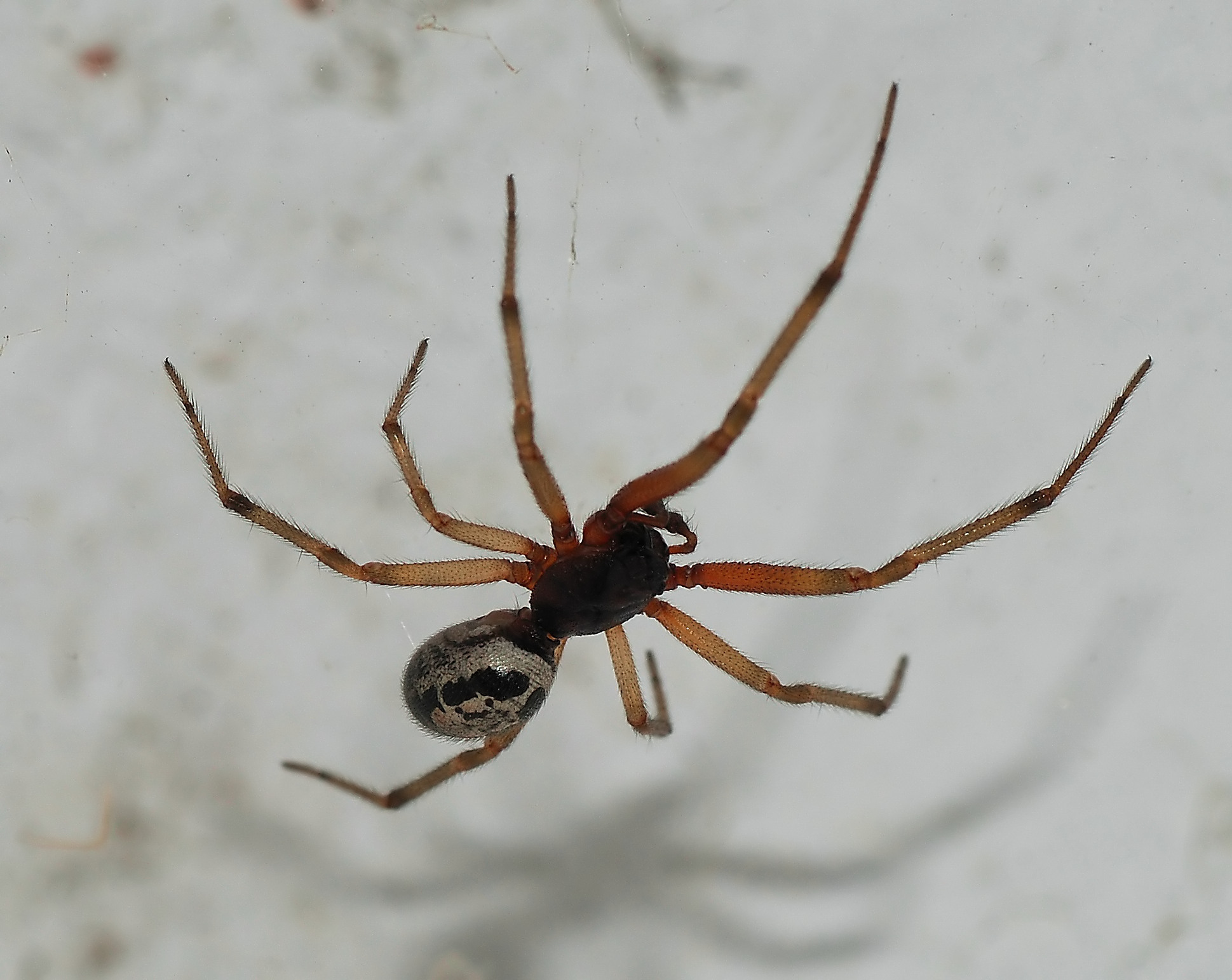False widow spiders are one of the most feared arachnids in Britain, and for good reason. These venomous creatures can be found throughout the UK, but their presence is often misunderstood. False widow spiders have been known to bite humans when provoked or threatened, making it important to know how to identify a false widow spider and understand its venomous capabilities.
They are commonly referred to as false widows in Britain because of their superficial resemblance to black widow spiders (Latrodectus). This also gives false widows a ferocious reputation and is often mistakenly thought to be highly venomous and potentially fatal to humans. False widows are, in fact, much less aggressive than black widows and many other spiders that are wrongly associated with them.
In this article, we will explore all you need to know about false widows in the UK – from identifying them, understanding their venom potential and where they live within our borders.
How To Identify a False Widow Spider
False widows are members of the Theridiidae family of spiders, which includes over 100 species found throughout Europe and parts of Asia. The easiest way to identify a false widow spider in the UK is by its physical characteristics, such as its size, shape, colouration and patterning:
- False widow spiders are usually brown or black in colour with distinctive white markings on their abdomen.
- They have an oval-shaped body that is typically around 1 cm (0.4 inches) long.
- The most distinguishing feature of false widows is their bulbous abdomens which contain venom glands used for defence against predators.
- False widows have distinctive white markings on their abdomen that resemble a skull or crossbones symbol – hence the name “false widow”.
- False widow spiders have long legs that span up to 15mm in length, making them larger than most other house spiders.
- The female false widow has an abdomen that is rounder than its male counterpart’s more elongated shape.
- Females also have two red spots at the front of their body, while the male does not have these spots but instead features yellowish stripes running down their back from head to tail tip.
- Both sexes feature pale cream-coloured markings along their backs as well as spines on their legs which help distinguish them from other UK spiders such as the common house spider or daddy longlegs spider.
The Different Types Of False Widow Spider In The UK
There are three very similar species of false widow spider found in the UK, which all belong to the genus Steatoda. These are the noble false widow (Steatoda nobilis), the cupboard spider (Steatoda grossa) and the rabbit hutch spider (Steatoda bipunctata). The noble false widow is not native to the UK, but the latter two are.
Noble false widows, the most venomous and common of the three, are often confused with the spiders mentioned above. The easiest way to differentiate the false widow from these two is by comparing their abdomen markings. All female false widows have a globular shiny abdomen, while males are less rounded.
Additionally, each of the three false widow species found in the UK has a narrow white marking around the abdomen. Males have furthermore markings on the body, but often these are either too dull or not present on the female variant.
Here’s some more detail on how to tell the different species apart from one another:
Noble False Widow Spider (Steatoda nobilis)
A primary characteristic of the noble false widow spider is its shiny black hairless body and orange or red bulbous abdomen, with reddish brown legs. It is the largest of the three species and also the most likely to bite humans. Females range from about 9.5 to 14 mm in size, while males are 7 to 11 mm. On the male abdomen, you’ll see a beige skull-shaped pattern which only adds to its intimidating looks. These patterns are absent or dull on adult females, who usually have very few markings.

Cupboard Spider (Steatoda grossa)
A shiny dark brown spider with long slender front legs and an abdomen being a shade of brown, sometimes with two beige or lightly coloured triangles and lines on it. They are a little smaller than noble false widows (females growing up to 10 mm, and males up to 6 mm) and are often found in cupboards or drawers. They have been known to bite, but not enough to break human skin.

Rabbit Hutch Spider (Steatoda bipunctata)
The rabbit hutch spider is the smallest of the false widow species, with females growing up to 7mm and males typically growing to approximately 5 mm. Its body is mainly shiny dark brown and has four distinctive indentations on its abdomen. Male abdomens have a lightly coloured band which runs down its length, but in females, this marking is dull or sometimes not visible at all.

False Widow Habitat
False widows tend to build their webs close to ground level and can often be found near windowsills or door frames where they have easy access to insects that make up their diet. The spiders usually hide during the day and come out at night when it is cooler and there is less activity around them.
Outdoors, false widows can primarily be found under stones, logs, or wood line pieces where they prefer to live. It is important to note that false widows are not usually found outside because they cannot survive extreme cold. This is why as the cold temperatures kick in during early autumn and winter in the UK, they migrate into the warmth of the closest house or shed they find. After this mass exodus, false widow sightings and bites naturally tend to rise.
As for indoor places, they are usually found in crevices and cracks in doors, windows, and garages. False widows prefer dark, damp places such as under the sink, under the bathtub or behind the fridge. They also like to live in sheds where it is cool and moist.
Where do false widow spiders live in the UK?
False widows can be found in many parts of England, Wales and Scotland but are most commonly seen in the southeast. False widows prefer warm, sheltered environments such as sheds, garages and conservatories. They may also take up residence inside homes or businesses if they find an entry point.
Are false widow spiders common in the UK?
They are extremely common spiders throughout Great Britain, especially in southern England and along the south coast. Although most spider bites and sightings recorded have been in the southern counties, there has been a slow increase in sightings such as in North Wales and Lincolnshire as they slowly spread north and into other parts of England. Experts believe this is due to global warming and rising temperatures in the once colder northern parts of Europe.
False Widow Spider Venom
While false widows look similar to the more dangerous black widow spider, false widows are not considered as deadly. However, their venom can still cause painful reactions in humans and animals alike.
The bite from a false widow spider is usually no worse than that of a bee or wasp sting. Symptoms may include redness and swelling around the area of the bite, along with some pain and itching. In rare cases, it can lead to nausea or dizziness if left untreated for too long. The symptoms should subside within 24 hours, but medical attention should be sought if any severe reaction occurs, such as difficulty breathing or an allergic reaction like hives or rash over large areas of skin.
Are false widow spiders venomous?
The false widow spider is said to be the most venomous spider in Britain, but its venom is not considered deadly. Although the noble false widow can give a nasty bite, they are not like their cousin, the notorious black widow, which is deadly venomous. The false widow’s poison contains different chemicals that affect the nervous system but not enough to cause much harm. False widow venom is a neurotoxin that can cause pain, swelling and other symptoms when injected. It is important to be aware of the potential risks associated with false widow spiders, so let’s look at what happens when you get bitten by one.

False Widow Spider Bite
False widow spider bites can be painful and sometimes cause infection. Therefore, it is important to know how to identify a false widow spider in order to avoid being bitten.
What are some symptoms of a false widow spider bite?
Under normal circumstances, the only symptom of being bitten by a false widow is swelling and throbbing pain around the bitten area. Other symptoms are nausea, itching, allergic reactions, muscle tension and spasms.
The symptoms typically begin within 20 minutes of being bitten and can last up to 24 hours. In some cases, the bite can be serious and will require medical attention to avoid further complications.
Rarely will a false widow spider bite cause death or severe illness in humans. This is because their fangs aren’t as powerful as other related spiders, so they will have a hard time penetrating human skin.
It’s worth noting that there have been no confirmed cases of humans dying in the UK due to false widow bites, but in some rarer cases, an allergic reaction has caused complications. Also, medically significant symptoms can occur, especially if a bacterial infection such as necrotising fasciitis kicks in.
What are the long-term effects of a false widow bite?
In most cases there will be no long-term effects from a false widow bite; however, it is important to seek medical attention immediately if you experience any unusual symptoms after being bitten by one of these spiders. It is also important to note that while bites from this species are rarely fatal, they can become infected due to bacteria on their fangs which could result in further complications down the line if not treated promptly with antibiotics prescribed by your doctor.
How can I avoid being bitten by a false widow spider?
If you do spot one inside your home, then it is best practice to use insecticide spray or contact pest control services for assistance in removing them safely without causing harm either to yourself or other wildlife living nearby.
What should I do If i’m bitten by a false widow spider?
If you find yourself bitten by a false widow spider, there are a few things you must do to avoid complications:
- Try to avoid scratching the bite site, as any unnecessary ripping of the skin may cause infection and further issues.
- Clean the wound with soap and water but don’t attempt to cut out or suck the venom as you’d often see in the movies.
- If you have a bite spray or antihistamines, use them. Antibiotics at this stage will not help but may be prescribed by a doctor later if the bite becomes infected.
- If a false widow spider bites a baby or young child, call an appropriate medical professional immediately, such as the Accident and Emergency department.
False Widows In The Home
What to do if you find a false widow spider?
If you find a false widow spider in the UK, it is important to remain calm and not panic. The best course of action is to carefully remove the spider using a glass or container and then release it outside away from your home. If you are concerned about being bitten, wear gloves when handling the spider. False widows are generally harmless but if you experience any symptoms such as pain, swelling or itchiness after contact with one, seek medical advice immediately.
How do I get rid of false widow spiders?
Sometimes, homeowners can get rid of spiders themselves if they can effectively identify where they are hiding. If doing so, you must wear proper protective clothing to avoid being bitten (rubber gloves, long sleeves and long trousers are recommended). According to the British Pest Control Association, there are a couple of basic things you can do if false widows reside in your home:
- Keep your home pest-free by using an insecticidal spray. This will remove the available prey, and therefore false widow predators will be unlikely to look for a meal in your home.
- Vacuum the spider, its webs, and the area where it resides.
- In case of an infestation, or if the above fails to work, call a professional pest control company, who can advise you on the next appropriate steps.
Should I worry about false widow spiders?
Many people are understandably frightened of this species of spider. A recent study from NUI Galway’s Ryan institute found that noble false widow venom is 230 times more potent than native Irish spiders. To put this into perspective, there are 650 known species of UK spiders, and only 12 of these have been known to bite humans and cause severe pain. Of these 12, the noble false widow causes the most painful bite.
So, yes, their venom is significantly more potent than other British spiders, but in the extremely rare confirmed cases, noble false widow bites have been compared to a wasp sting.
False widow spiders are not considered a major health risk to humans. Although their bites can cause some discomfort, they rarely require medical attention. It is best to take precautions when dealing with any spiders and keep them away from your home by sealing cracks and crevices around windows or doors. If you do come across one, it is recommended that you avoid contact and call an expert for advice on how to safely remove the spider from your property.
In Summary
If you encounter one in your home or garden, it’s best to leave them alone and observe from a distance. Knowing how to identify false widows, understanding their venom and bite risks as well as where they live in the UK will help you stay safe when encountering this species of spider.
Although the false widow bite can be dangerous, the venom is not fatal. The most severe symptoms tend to occur when a bite is left untreated.
It is important to note that these spiders are slow-moving and harmless if you leave them alone – they will only bite when provoked or disturbed.
So what does the future hold for the false widow? They have become increasingly common in the UK over recent years, and, likely, their numbers will only grow as more sightings are reported. Will we see more of them in other parts of the UK? Only time will tell.
Sources and References
- How Dangerous Are False Widow Spiders – nhm.ac.uk
- Pest Advice For Controlling False Black Widow Spiders – bpca.org.uk
- Falsehoods Of The False Widow Spider – dorsetwildlifetrust.org.uk
Sam loves to learn about animals and their habitats. He has been a nature lover from a very young age, and has been writing papers and articles about wildlife for as long as he can remember.
